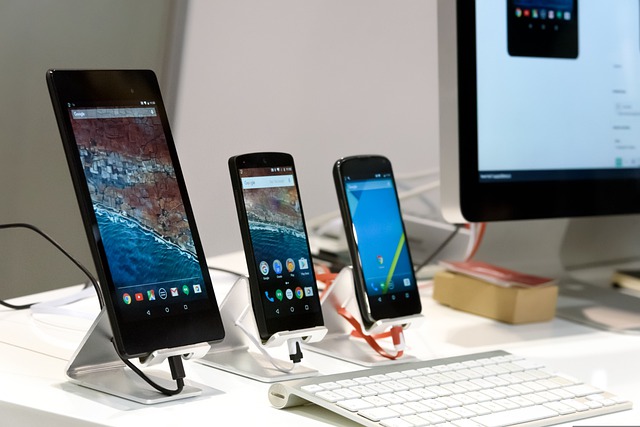The education system is ideally combined with technology. Applications provide an opportunity to make the learning process informative, interactive and fun. This attracts a wide audience, expands the opportunities for the introduction of new services and helps to get excellent interaction with the audience. Educational applications open up new opportunities for universities, schools, private teachers and training centers. If you are interested in how to develop an educational app this article is for you.
Why are mobile applications for education effective?
Educational applications allow you to modify the teaching system and bring it to a new level. Moreover, this approach works both for conventional education in schools, universities and other educational institutions, and in private teaching. Learning with a mobile application is effective, and here’s why:
1. Techniques and software packages are combined into one system and controlled from the user’s device.
In other words, learning applications can combine several courses, educational programs, and the student does not have to use different applications or resources.
2. Saving time, money, effort and resources
Many courses and educational programs require tools for clarification. For example, it is difficult to explain mathematics in lay terms, or guitar lessons without a guitar. Educational applications can replace or be an alternative to such tools.
3. Tracking progress and dynamics
Digital statistics allows you to monitor progress, and tests control the learning process. So it is possible to implement applications for educational institutions. The student’s digital diary, class attendance schedule and other tools make it easy to track the dynamics and progress of the student.
4. Interactivity
The main advantage of educational applications is the possibility of interactive interaction with the user. You have to admit, physics is much easier to explain if many processes can be shown and made so that the student himself takes part in them in a playful way.
5. Adjustment to needs and opportunities
The user of the mobile application can study on a trip, on vacation, during a break between work, whenever he wants. This opens up tremendous opportunities, customization gives flexibility and a unique offer.
6. Easy monetization
Educational applications bring money to their owner, they are easy to monetize and introduce additional paid features.
Applications for educational activities not only bring profit to the business, but are also useful for the users themselves. Any project can be implemented.
What should be implemented?
For an application to be effective, it is necessary to clearly understand its goals and objectives. So, it will be easy to implement all necessary features. But educational applications have one thing in common: some of their functions are related and should be implemented in most cases. What should be implemented:
- online diary or student success page;
- personal account with statistics, rates and other data;
- tools for adding audio, video and photo content;
- interactive tools for interesting interaction;
- assessment system, tests;
- monetization tools, if necessary;
- blog-type pages with information, answers to questions;
- pages with educational materials;
- a catalog of courses, lessons, classes that allows you to structure your records;
- tools to communicate with the teacher.
Of course, an individual set of functions is selected for each application. It depends on the cost, the timing of the task. Educational applications have clear goals and objectives. Later we will define the features of apps for universities and schools so you can understand how to implement the project from an idea to a fully functional program by the case of the most difficult type of educational apps.
Features of mobile applications for schools and universities
Educational apps for schools, universities, and other formal educational institutions are somewhat different from commercial-type apps. They should act as an assistant to the student and replace the teacher at some points. Typically, they perform the following tasks:
- allow the student to receive additional information and knowledge, including tools for interactive interaction in the application;
- accelerate the exchange of information, improve interaction between the teacher and the student;
- create an educational community where each participant contributes to its development;
- simplify the assessment system and control over knowledge, as a rule, through testing and other methods of assessment;
- modernize the learning process, attracting more students and simplifying the understanding of the information received.
Educational applications significantly increase the interaction between the student and the educational institution. Control is simplified, the learning process becomes more interesting, easier and more accessible, and the systematization of the knowledge base allows you to update it in a timely manner.
Stages of educational application development
Let’s consider the stages of app development. Inoxoft works on a proven algorithm that allows specialists to quickly understand tasks, form a concept and develop educational applications.
- Idea discussion. If you have an idea then experts will “twist” it, form and create a shell for it.
- Analytics. Specialists check the niche, study demand, audience, make a growth forecast, study competitors. All data should be collected to create an effective and popular application at once.
- Concept and prototype. Based on the data, a development company forms a concept and creates a prototype. So you will begin to see the idea, and how the solution will look in the end. After the approval of the prototype, the terms of reference are created, and the specialists start to develop.
- Design and technical development. Educational applications should be simple on the outside, but complex on the inside. The designer does everything to hide complex algorithms behind the simplicity and elegance of the interface. Developers create working modules and turn the idea into reality.
- Testing and launch. The testing is carried out, the application is checked for errors, and if the testing is successful, it launches. Good specialists help to unload it to the sites, and train your employees to use the tools.
Conclusion
Educational app development is an excellent solution for both business and government agencies. Modern society is moving towards technology, and the education system should not lag behind. This will help you get ahead of your competitors, become more accessible and expand your audience. If you already have an idea for your future project or you are just thinking about bringing a really useful product to the market in the field of education, the Inoxoft’s team will support your efforts and allow you to successfully implement your idea in the shortest possible time.







Recent Comments